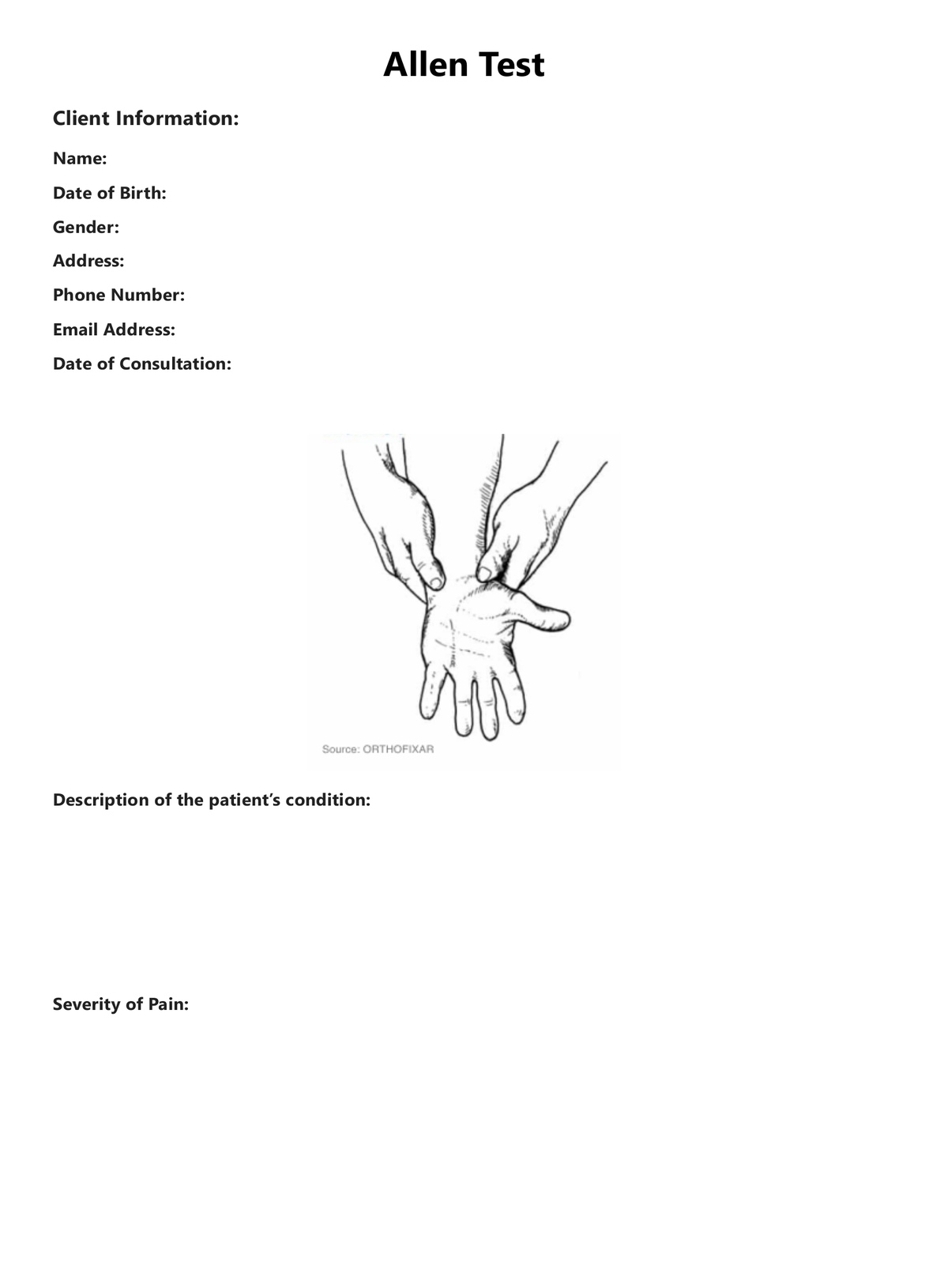Dr. Edgar Van Nuys Allen, an American physician, initially introduced the Allen Test in 1929.

Allen's Test
Allen's Test is a physical examination used to assess blood flow through the ulnar and radial arteries in the hand. It helps diagnose arterial occlusion.
Allen's Test Template
Commonly asked questions
The Allen Test is a straightforward process in which a medical professional occludes the radial and ulnar arteries at the wrist to see how soon the hand returns to normal color once the pressure is removed from each artery.
To score the Allen Test, a healthcare provider will compare the time it takes for the patient's hand to return to its normal color after pressure is released from the ulnar artery versus the radial artery, and assess whether there is adequate blood flow through each artery.
EHR and practice management software
Get started for free
*No credit card required
Free
$0/usd
Unlimited clients
Telehealth
1GB of storage
Client portal text
Automated billing and online payments











